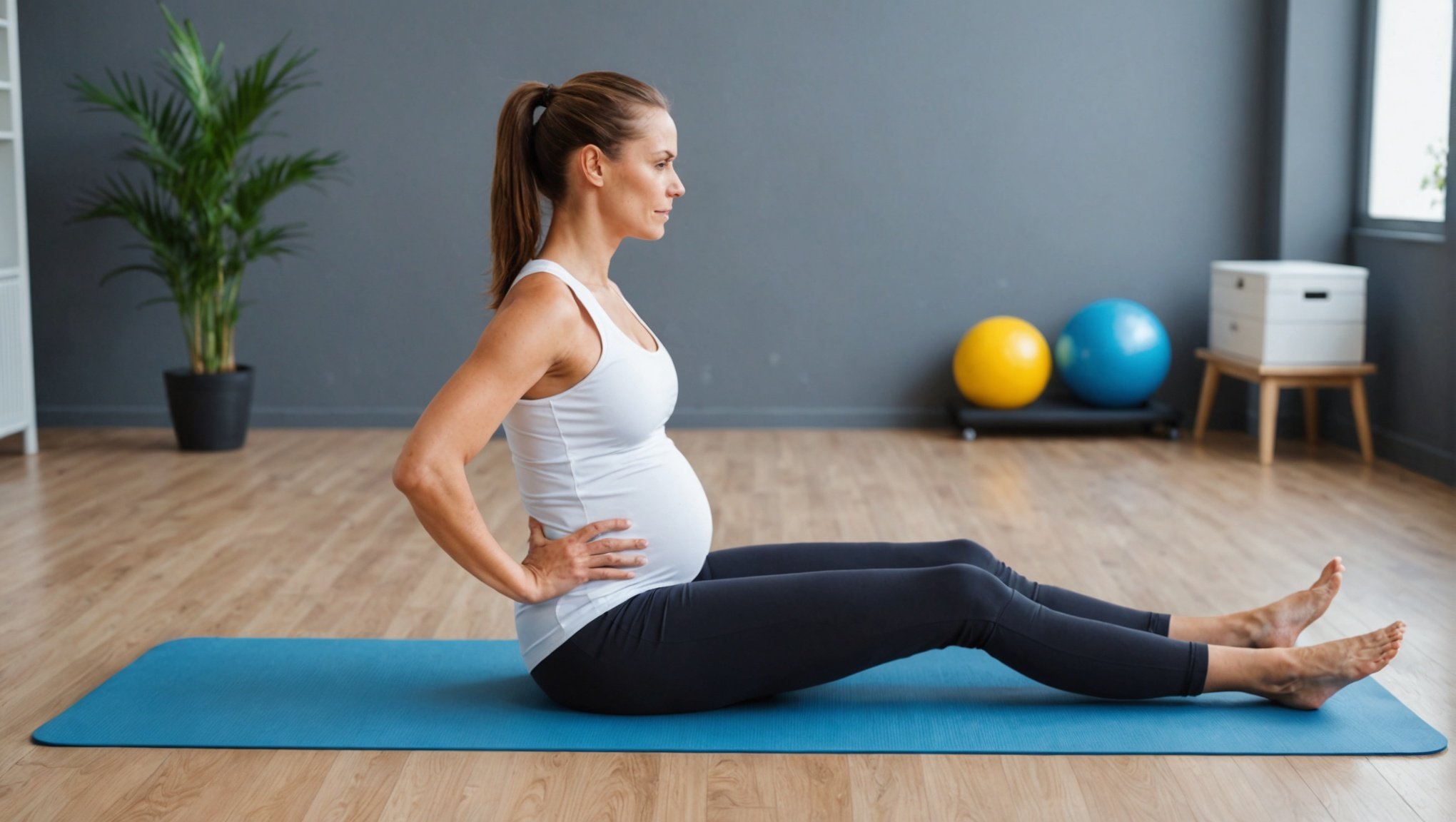Pregnancy is a miraculous journey, filled with joy and anticipation. Yet, it also presents unique physical challenges, possibly leading to discomfort and pain. Among the common complications experienced by expectant mothers, lower back pain tends to rank high. As your pregnancy progresses week by week, you may find that your growing belly puts increasing strain on your back. However, certain core-strengthening exercises can alleviate this discomfort, helping you maintain better health and well-being during this special period of your life. Let’s explore these exercises in more detail.
Importance of Core Strength During Pregnancy
Understanding the significance of a strong core during pregnancy is fundamental. Your core muscles, which include the abdominal, back, and pelvic muscles, play a crucial role in supporting your growing baby. They help maintain your balance, improve your posture, and reduce the strain on your back.
Also to read : Which Essential Oils Are Most Effective for Scar Diminishment?
When these muscles are weak, you may experience more discomfort and pain, especially in your lower back. During pregnancy, hormonal changes make your ligaments and joints more flexible, causing instability and making you more prone to injuries. Therefore, strengthening your core muscles is essential not only for your comfort but also for your overall pregnancy health.
Keep in mind, before engaging in any exercise regimen, it’s crucial to consult with your healthcare provider to ensure the activities are safe for both you and your baby.
Also read : What Are the Best Natural Methods to Reduce Anxiety Before a Major Meeting or Presentation?
Pelvic Tilts and Floor Bridges
Pelvic tilts and floor bridges can be highly beneficial for pregnant women experiencing lower back pain. They target the abdominal, back, and pelvic muscles, enhancing core stability and reducing discomfort.
To perform a pelvic tilt, start by lying on your back on a mat, knees bent, and feet flat on the floor. Inhale, and as you exhale, engage your abdominal muscles to tilt your pelvis towards your belly button. Hold the position for a few seconds before returning to the starting point.
Floor bridges, on the other hand, involve lying on your back with your knees bent and feet flat on the floor. Lift your hips towards the ceiling, squeezing your glutes at the top of the movement. Lower your hips back to the floor and repeat.
These exercises not only help improve core strength but also promote better body awareness, which can be particularly beneficial during labor and delivery.
Side-Lying Leg Lifts and Modified Planks
Continuing with core-strengthening exercises, side-lying leg lifts and modified planks are excellent options. These exercises target the oblique muscles, part of your core that plays a significant role in stabilizing your torso and reducing lower back strain.
For side-lying leg lifts, lie on your side with your bottom leg bent for stability and your top leg straight. Lift the top leg as high as you can without moving your pelvis, then lower it back down. Repeat this movement for several reps before switching to the other side.
The traditional plank may be challenging during pregnancy, but a modified version can be just as effective. Start on all fours, with your hands directly under your shoulders and knees under your hips. Engage your core and lift your knees off the floor, holding the position for a few seconds before lowering them back down.
Prenatal Yoga and Pilates
Finally, it’s worth considering structured exercise programs like prenatal yoga and Pilates. These methods focus on improving core strength, flexibility, and balance, which can all help to minimize lower back pain during pregnancy.
Prenatal yoga combines physical postures, breathing exercises, and meditation to promote physical and mental well-being. Many poses, like the cat-cow and child’s pose, specifically target the core muscles, helping to alleviate lower back pain.
Similarly, prenatal Pilates emphasizes core strength and stability. This method involves a series of controlled movements that target the core muscles, improving posture and reducing the strain on the back. Exercises like the pelvic curl and modified swimming are particularly beneficial for pregnant women.
Remember, whether you’re a seasoned exerciser or a beginner, always listen to your body. If you experience discomfort or pain during any of these exercises, stop immediately and consult with your healthcare provider. Your body’s needs and capabilities change during pregnancy, requiring a sensitive and adaptable approach to physical activity.
The Important Role of Rest and Nutrition
While exercises are crucial in reducing lower back pain during pregnancy, other factors also play a key role. Remember to incorporate sufficient rest and proper nutrition into your routine. Maintaining a balanced diet rich in essential nutrients not only supports the health of you and your baby, but can also enhance your body’s ability to recover from physical exertion.
Rest, on the other hand, is just as important as exercise. It helps your body recover, maintain health, and prepare for the demands of labor and childbirth. Therefore, ensure you get plenty of sleep and take rest days between exercise sessions.
In conclusion, while pregnancy can be a challenging time, it’s also an opportunity to explore new ways of maintaining your health and well-being. By incorporating core-strengthening exercises into your routine, you can help alleviate lower back pain and enjoy a more comfortable pregnancy experience.
The Benefits of Resistance Bands and Neutral Alignment Exercises
Resistance bands and neutral alignment exercises can provide excellent support in strengthening your core muscles, which can help in preventing and managing lower back pain during pregnancy. Resistance bands are highly versatile, portable, and affordable, allowing you to perform a variety of exercises that target different muscle groups.
Neutral alignment exercises, on the other hand, focus on maintaining an appropriate posture during movements. This is crucial in strengthening the deep core muscles and preventing diastasis recti, a condition where the large abdominal muscles separate due to the growing baby.
For instance, a simple resistance band exercise is the seated row. Firstly, sit on a mat with your legs extended in front of you. Wrap the resistance band around your feet, hold the ends in each hand, and pull, squeezing your shoulder blades together. This exercise strengthens your back muscles, which can alleviate the strain on your lower back.
For neutral alignment, practice the cat-camel exercise. This involves positioning yourself on all fours, aligning your hands under your shoulders and your knees under your hips. As you inhale, arch your back upwards, tucking your belly button towards your spine (like a cat), and as you exhale, slowly lower your back towards the floor, lifting your head and tailbone (like a camel).
This exercise engages your deep core muscles, helping to relieve low back pain. However, always remember to start each exercise in a starting position with a neutral spine to avoid any injury.
The Role of Side Planks and Kegel Exercises
Side planks and Kegel exercises are fantastic ways to strengthen your core and pelvic floor muscles, which can significantly reduce lower back pain in pregnant women.
For the side plank, start by lying on your side with your elbow directly under your shoulder and your legs stacked. Engage your core and lift your hips off the floor, forming a straight line from your head to your feet. Hold the position for a few seconds before lowering your hips back down.
Kegel exercises, on the other hand, focus on strengthening the pelvic floor muscles, which support your uterus, bladder, and bowel. These muscles can be weakened during pregnancy and childbirth, increasing the risk of incontinence and lower back pain. To perform a Kegel exercise, contract the muscles as though you’re trying to stop a flow of urine, hold for a few seconds, then release.
Practicing these exercises regularly during your pregnancy week and beyond can help maintain a strong core and alleviate back pain.
Conclusion
Pregnancy is indeed a beautiful journey, filled with anticipation and excitement. However, it can also bring about physical discomfort, with lower back pain being a common concern. Thankfully, by incorporating core-strengthening exercises into your routine, such as pelvic tilts, floor bridges, side-lying leg lifts, modified planks, resistance band exercises, neutral alignment exercises, side planks, and Kegel exercises, you can significantly alleviate this discomfort.
Moreover, enrolling in structured programs such as prenatal yoga and Pilates can provide a comprehensive workout that emphasizes core strength, stability, and flexibility.
Of course, it’s also crucial to maintain a balanced diet and get plenty of rest to support your body’s recovery and overall health. Remember, always consult with your healthcare provider before starting any new exercise regimen during your pregnancy.
In conclusion, while every pregnancy is unique, a common denominator is the importance of a strong core. By investing time and effort into strengthening your core muscles, you can enjoy a more comfortable and healthier pregnancy, minimizing lower back pain and preparing your body for the journey of childbirth.











